Haiti Photo Stories
Every picture has a story to tell... Here you will find a list of Haiti photo stories, a blog where I tell you when, where and why a Haiti photo was taken.
Odette Roy Fombrun: Centenarian, A Pillar of Haitian Culture and Intellect
Odette Roy Fombrun was a Haitian Centenarian. The Haitian writer and teacher was born on June 13, 1917, in Port-au-Prince.
Odette Roy Fombrun was a distinguished Haitian writer, historian, and intellectual. She left a lasting impact on Haiti's cultural and intellectual landscape through her insightful contributions.
Odette Roy Fombrun was associated with the drafting of the country's new constitution. She was a part of the commission that prepared the Preliminary Draft of the Constitution in 1987.
Fombrun's work spanned various domains, encompassing literature, history, and broader societal concerns. She played a pivotal role in preserving and promoting Haiti's heritage and identity.
Beyond her academic pursuits, Fombrun was an advocate for education and social progress. Her legacy continues to inspire generations, serving as a beacon of Haitian intellect and resilience.
Odette Roy Fombrun died on December 23, 2022 at the age of 105, in Petion-Ville,
Gratitude - Be thankful for everything in life, even the tiny little things that you think are not important.
Gratitude is a powerful practice that can transform your perspective on life. Embrace a mindset of thankfulness, appreciating even the seemingly insignificant aspects of your journey.
Each day, take a moment to acknowledge the small blessings that often go unnoticed - a warm cup of coffee, a friendly smile, a moment of tranquility.
Cultivating gratitude not only brings positivity into your life but also fosters resilience in challenging times.
When you shift your focus to gratitude, you open the door to a more fulfilling existence. Recognize that every experience, no matter how minor, contributes to your growth and well-being.
Gratitude invites mindfulness, allowing you to savor each moment and find joy in the present. As you consistently practice gratitude, you'll find your perspective expanding, enabling you to navigate life's ups and downs with a renewed sense of appreciation.
Remember, the journey of self-improvement starts with acknowledging the richness of your life. Embracing gratitude is a small yet profound step towards self-help.
By celebrating every facet of your existence, you invite positivity, resilience, and a deeper connection to the beauty that surrounds you.
Labadie / Labadee Haiti - A view of the Labadie Peninsula in Northern Haiti
Contrary to how Royal Caribbean cruise ads some depict Labadee/Labadie as an island, it is, in fact, a peninsula seamlessly connected to the Haitian portion of Hispaniola.
While marketing often portrays it as an isolated oasis, Labadee/Labadie Beach is just one beach on the Labadie Peninsula.
This a nice view of the better part of the peninsula. Labadie village is to the left, out of frame. Labadee Beach, the beach where all the Royal Caribbean tourists go to, it is not even in this picture. Labadee Beach is to the right way out towards the edge of the Peninsula.
Labadee's true geographical identity reveals a closer tie to the larger landmass. Nestled along the northern coast of Hispaniola, Labadee showcases a fusion of enticing coastal allure and cultural heritage.
Acknowledging its peninsula status provides a more accurate perspective, inviting travelers to appreciate both its scenic charm and its integral place within the captivating story of Hispaniola.
A Memorable Encounter: Michel-Ange Gedeon's Courteous Visit to Radio Kiskeya and Snapshot with Journalist Liliane Pierre-Paul
On May 7, 2018, the Director-General of the Haitian National Police, Michel-Ange Gedeon, paid a courteous visit to the entire team of Radio Television Kiskeya on the occasion of the station's 24th anniversary.
During his visit, DG Michel-Ange Gedeon took a photo with journalist and broadcaster Liliane Pierre-Paul, co-founder of Radio Kiskeya.
PHOTO: Malaika Martelly, daughter of ex Haitian president Michel Martelly
Malaika Martelly is the only daughter of former Haitian President Michel Martelly and Sophia Saint-Rémy. She has a background intricately tied to the political and cultural fabric of Haiti. Born into a family that holds a significant place in Haiti's recent history, Malaika inherits a legacy that combines political influence and artistic expression.
Her father, Michel Martelly, is not only known for his political leadership but also for his musical prowess. Before serving as the President of Haiti from 2011 to 2016, he carved out a successful career as a musician and performer, adopting the stage name "Sweet Micky."
Malaika's mother, Sophia Saint-Rémy, has played a pivotal role in the family's journey, contributing her support to her husband's political and musical career.
While Malaika Martelly's public engagements might be lesser known compared to her parents, her background in such a prominent family naturally garners attention.
As she navigates her own path, Malaika inherits a unique blend of political insight, musical heritage, and cultural awareness, which could potentially shape her future endeavors.
When Ertha Pascal married Ernst Trouillot, she kept her maiden name and became Ertha Pascal-Trouillot
Ertha Pascal-Trouillot is one example of a professional Haitian woman who, proud of her family name and her achievements, got married and kept her last name.
Though she did not keep it entirely, she added her husband's Trouillot last name to her last name, Pascal, and became known as Ertha Pascal-Trouillot
Her decision to keep her family's last name flying high even after her marriage brought a lot of pride to the Pascal family.
Ertha Pascal-Trouillot achieved numerous groundbreaking milestones in her career including becoming the first woman president of Haiti.
Her decision to bring her Pascal maiden name to new heights as a Haitian woman became one for the history books.
Just like Barack Obama is a byproduct of an African man who left his seeds in America, Patrick Gaspard is a byproduct of the Haiti brain drain
The story of Patrick Gaspard, born in Kinshasa, Democratic Republic of Congo, in 1967 to Haitian parents, reflects a pivotal moment in the legacy of Patrice Lumumba's call for diaspora academics to contribute to newly independent African states.
As we delve into Gaspard's narrative, we uncover the interconnected factors that drove Haitians - teachers, professors, engineers, and doctors - to Africa, a phenomenon that inadvertently triggered a significant brain drain in Haiti.
The early 1960s marked a time of seismic change, with African nations gaining independence from colonial powers. Patrice Lumumba's impassioned plea resonated deeply with many in Haiti including Patrick Gaspard's parents.
Gaspard's background exemplifies the hopes and dreams of a generation eager to be part of Africa's transformation.
Born in Kinshasa to Haitian parents who had heeded Lumumba's call, Gaspard grew up with a unique blend of cultural influences.
His story encapsulates the crossroads of identity and opportunity - a tale of being connected to two nations while standing at the forefront of change.
Gaspard's birth in Kinshasa to Haitian parents who responded to Lumumba's plea encapsulates a chapter of intertwined histories, aspirations, and dilemmas.
While his parents journey embody the spirit of unity and collaboration that Lumumba championed, it also symbolizes the brain drain that had a lasting impact on Haiti.
The unintended consequence of Gaspard's parents heeding Lumumba's call was the emergence of a two-fold challenge for Haiti.
On one hand, the nation lost a significant portion of its educated workforce, hampering its capacity to address pressing issues and fueling a cycle of economic stagnation.
On the other hand, the departure of individuals like the Gaspard family meant that Haiti's potential to foster intellectual growth and drive positive change was diminished.
Gaspard's narrative stands as a reminder of the intricate balance between seeking opportunities beyond borders and nurturing the growth and progress of one's homeland.
This is what Fey LALO (Jute Leaves) looks like - Haitians love to eat Legume Lalo
For all of you Haitian-Americans who have never seen what LALO looks like, this is it. These are the leaves that become delicious Lalo Legume, a very popular dish in Haitian Cuisine.
Visit this link to see a picture of a tasty "Chodye Legim Lalo". It is guarantied to make you run to the nearest Haitian restaurant right now and get you some.
Chodye Legim Lalo - Legume Lalo - Haitian Jute Leaves Stew
What is legume Lalo? Looks delicious doesn't it? Lalo Legume is a vegetable stew made with Lalo leaves and beef. It is called Lalo in Haitian Creole but in American English it's called jute leaves.
So, lalo legume is lute leaves stew.
But in Haiti, we say: Gad'on chodye legim lalo mezanmi!
Visit this page if you want to see what Lalo leaves - the jute leaf - looks like before it is cooked.

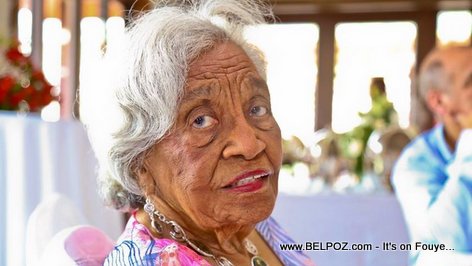

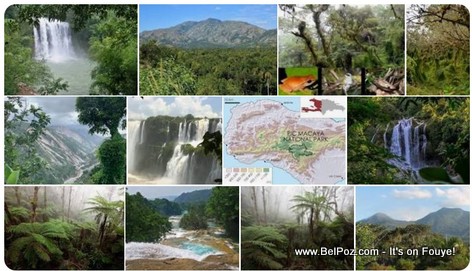
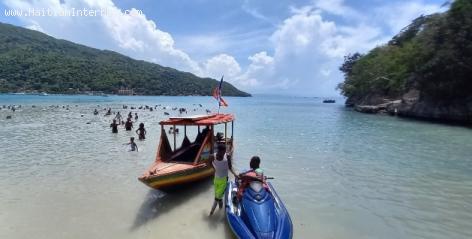




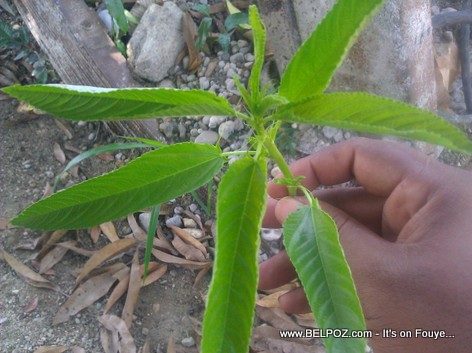
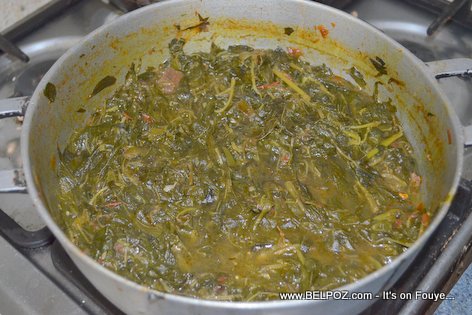
 Haiti's brain drain: Back in the 1960s lots of Haitian teachers and...
Haiti's brain drain: Back in the 1960s lots of Haitian teachers and...  PHOTO: Roody Roodboy and his mother
PHOTO: Roody Roodboy and his mother  When foreigners ask me how is Haiti doing, this is what I tell them
When foreigners ask me how is Haiti doing, this is what I tell them  An American Priest in Haiti brokers a Peace Pledge between 4 rival gangs...
An American Priest in Haiti brokers a Peace Pledge between 4 rival gangs...  Haitian Pastor Estiverne Jean-Charles
Haitian Pastor Estiverne Jean-Charles  Naomi Osaka vs Ashleigh Barty - 2019 China Open
Naomi Osaka vs Ashleigh Barty - 2019 China Open  Billionaire Robert F. Smith
Billionaire Robert F. Smith  Rospide Petion - Haitian Journalist
Rospide Petion - Haitian Journalist  Naomi Osaka at a 2019 Porsche Tennis Grand Prix Press Conference
Naomi Osaka at a 2019 Porsche Tennis Grand Prix Press Conference  The Hispaniolan Solenodon, Called Nen Long in Haitian Creole
The Hispaniolan Solenodon, Called Nen Long in Haitian Creole  PHOTO: Naomi Osaka and Michael B. Jordan
PHOTO: Naomi Osaka and Michael B. Jordan  2018 WTA Finals - Naomi Osaka vs Sloane Stephens
2018 WTA Finals - Naomi Osaka vs Sloane Stephens  Naomi Osaka and Coach Sascha Bajin
Naomi Osaka and Coach Sascha Bajin  Haitian-American Karine Jean-Pierre makes history as first...
Haitian-American Karine Jean-Pierre makes history as first...  Anyone with a gun in Haiti automatically becomes an authority...
Anyone with a gun in Haiti automatically becomes an authority...  Which model country is Haiti trying to be like?
Which model country is Haiti trying to be like?  How many generations to be considered of Haitian descent? How...
How many generations to be considered of Haitian descent? How...  Haitian Journalist Roberde Celine dit Bob C., L'original, le...
Haitian Journalist Roberde Celine dit Bob C., L'original, le...  VIDEO - Reginald Boulos Haiti interview : There are no rich...
VIDEO - Reginald Boulos Haiti interview : There are no rich...  Koupye is Good for you : 10 Health Benefits of Koupye, or...
Koupye is Good for you : 10 Health Benefits of Koupye, or...